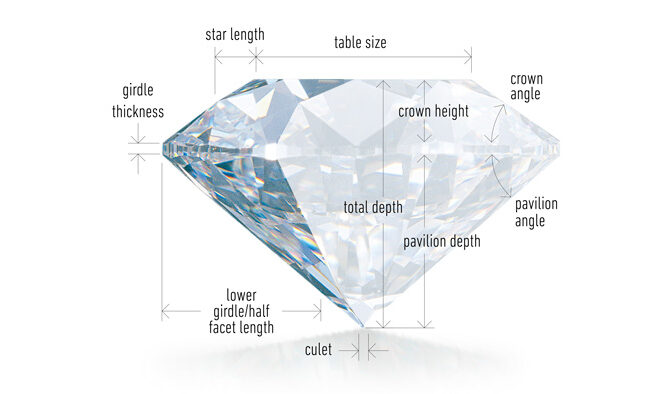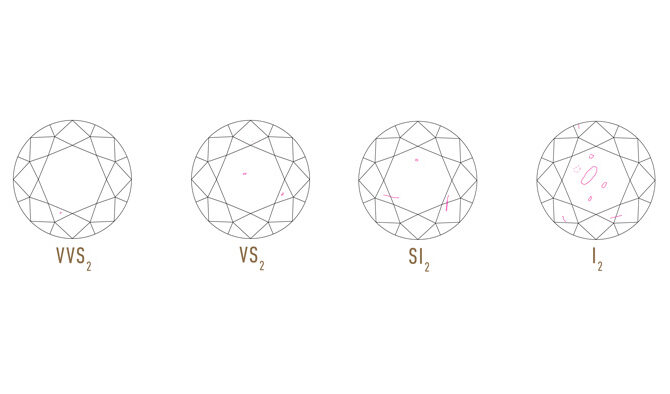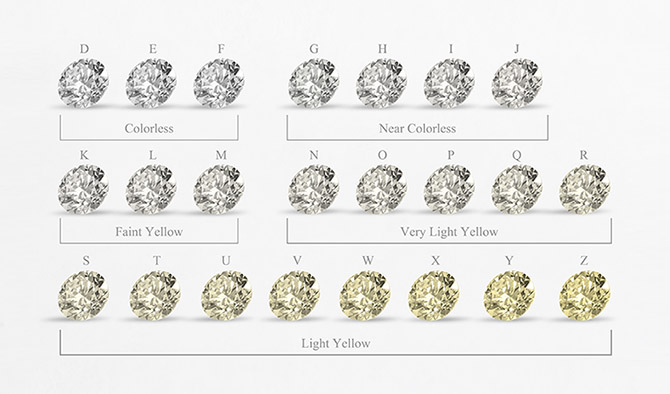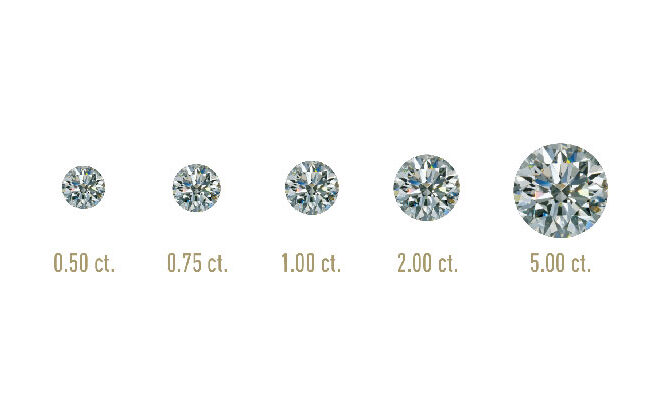The Four C’s
Use the grading of these 4 C’s ONLY as a guide and not a base to make your entire purchase off of. There are different variables at play even within the same color, or clarity, grades that can make one diamond appear much more beautiful than another. We always recommend working one on one with us to gain an understanding of how the diamond looks and performs in real life.

Cut
Diamonds are renowned for their ability to transmit light and sparkle so intensely. We often think of a diamond’s cut as shape (round, heart, oval, marquise, pear), but what diamond cut does mean is how well a diamond’s facets interact with light. When a diamond is cut to ideal proportions, light will then reflect from one facet to another and disperse though the top of the stone, resulting in a display of brilliance and fire.
Clarity
Refers to the presence of inclusions in a diamond. Inclusions are natural identifying characteristics such as minerals or fractures, that appear while the diamonds are being formed. The scale ranges from F (Flawless) to I (Included) and is based on the visibility of inclusions at 10x magnification. In determining a clarity grade, the GIA system considers the size, nature, position, color, and number of clarity characteristics visible under 10x magnification.


Color
Refers to the degree to which a diamond is colorless. The closer a diamond is to colorless, the more rare and valuable it is. Diamonds are graded on a color scale established by the Gemological Institute of America (GIA). Grades D, E, and F make up the colorless range which are very valuable. The Near Colorless Range of G, H, I, and J is very popular and offers a lot of value. Color differences can be very subtle, and grading is done under measured lighting and compared against a “master diamond” for accuracy. This color chart is representative of the color grades of a diamond.
Carat
Carat is not a measure of a diamond’s size but, rather a measure of a diamond’s weight. One carat can also be divided into 100 points. A 0.75 carat diamond is the same as 75 points or 3/4 carat diamond. The most important thing to remember when it comes to a diamond’s carat weight is that it is not the only factor that determines a diamond’s value. To determine a diamond’s actual size, we also look carefully at its spread or measurements. This is measured in millimeters and tells how large or small the diamond appears face up in relation to its weight.

There are many other factors besides the 4 C’s that give a diamond its identity. We can detail these factors in your consultations with us in order to help find the perfect diamond for you.
